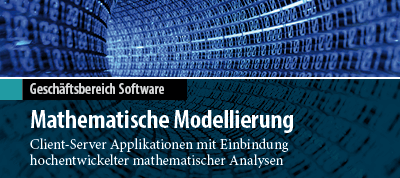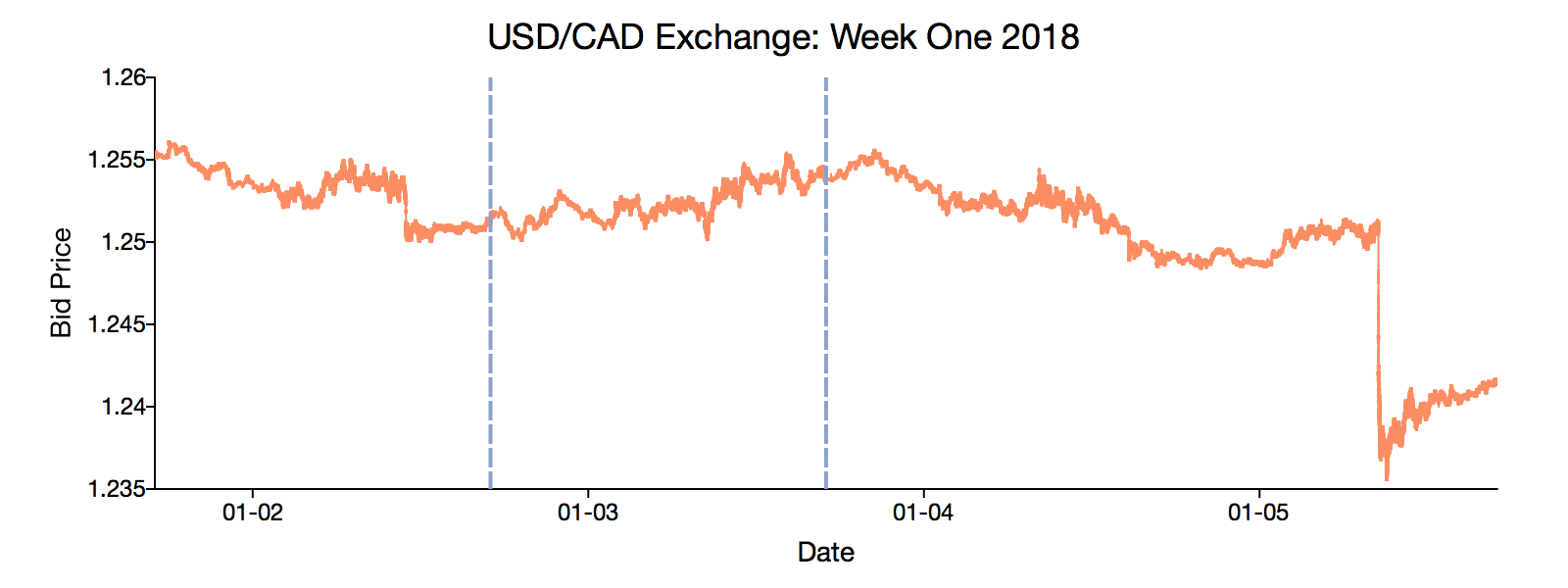Enhanced date and time management in GAUSS 19
Directly read date and time data using formula strings
// Tell GAUSS that 'RateDateTime' is a string date.
data = loadd("usd_cad_wk1.csv", "date($RateDateTime) + RateBid");The new formula string date operator transforms the way dates and times are read into GAUSS.
- Automatically detects and converts many common date/time formats.
- Supports hundredths of a second and nanoseconds.
Convert date formats with flexible formatting options
- Easy to use.
- Convert to and from almost any string format.
- Supports DT Scalars and POSIX date/times.
String date/time to seconds since the Epoch...
dt_posix = strctoposix(str_date, fmt_str);...and back to strings in your preferred format
// Convert to friendly string formats for tables and reports
print posixtostrc(dt_posix, fmt_str2);DT Scalars to friendly string formats
// Convert DT dates to strings for easy reading dt_str = dttostrc(dt, "%D");
...and back to DT Scalars
// Convert string dates to DT Scalars for plotting dt = strctodt(dt_str, "%D");
Perform operations on date and time data
GAUSS 19 includes a new suite of time series tools for creating and working with time vectors. Operations on time series data are intuitive and flexible across frequencies:
- Generate date vectors of varying frequency and length.
- Advance or regress date vectors.
- Find differences in dates and times.
Create sequences of dates
seqadt, shown below, creates sequences of DT scalar dates. Sequences of POSIX dates can be created with seqaposix
// Create a vector starting at January 1980, with // five elements, each incremented by one month dt_mths = seqadt(198001, 1, "months", 5); // Create a vector starting at March 1st, 2016, with // 6 elements, each incremented by seven days dt_weeks = seqadt(20160301, 7, "days", 6); // Create a vector starting at March 1st, 2016 at 09:30:00, with // 6 elements, each incremented by 12 seconds dt_sec = seqadt(20160301093000, 12, "seconds", 6);
↓
dt_mths = 19800101000000 dt_weeks = 20160301000000 dt_sec = 20160301093000
19800201000000 20160308000000 20160301093012
19800301000000 20160315000000 20160301093024
19800401000000 20160322000000 20160301093036
19800501000000 20160329000000 20160301093048
20160405000000 20160301093100Advance and regress dates
// Advance 17 days from July 21, 1984
dt_plus = timedeltadt(19840721, 17, "days");
// Regress 3 days from January 8, 1970
posix_minus = timedeltaposix(604800, -3, "days");↓
dt_plus = 19840807000000 posix_minus = 345600Find the difference between two dates
// How many days between April 16 and July 21, 2012
diff_days = timediffdt(20120416, 20120721, "days");
// How many seconds between 09:38:21 and 09:31:00
diff_sec = timediffdt(20120524093821, 20120524093100, "seconds");↓
diff_days = -96 diff_sec = 441














